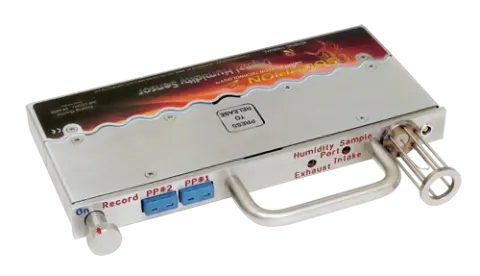Reading Thermal offers advanced data logging equipment for optimizing the baking processes in industrial bakeries. This equipment is critical, because every minute of downtime carries a cost. That’s why more bakeries are turning to predictive maintenance to stay ahead of problems before they escalate. We’ve seen how powerful real-time logging can be when it’s used not only to track oven performance, but also to anticipate maintenance needs with confidence.
From Reactive to Proactive: A Smarter Maintenance Model
Traditional maintenance schedules tend to fall into two categories: reactive or time-based. In the first, equipment is repaired after it fails – which often leads to emergency shutdowns and product loss. In the second, equipment is serviced on a fixed calendar, whether it needs attention or not. While time-based maintenance can prevent some breakdowns, it can also lead to unnecessary work, wasted parts, and missed signs of deeper issues.
Predictive maintenance flips that model. Instead of following a rigid schedule, bakeries monitor key performance indicators – like temperature trends, air flow behavior and humidity fluctuations – to spot early warning signs. Subtle shifts in these variables often point to mechanical wear, calibration drift, or component fatigue. By logging this data continuously, operators can detect when performance starts to deviate from the norm, long before a major breakdown occurs.
The Role of the SCORPION® 2 in Predictive Maintenance
Reading Thermal’s SCORPION® 2 Profiling System is designed for more than just product quality control – it’s a powerhouse for capturing the data needed to support predictive maintenance. The system includes a range of modular sensors, all of which work together to create a thermal fingerprint of your baking environment.
When you regularly log this information, patterns emerge. For instance, if air velocity begins to decline gradually in a particular zone, it could indicate that a fan is losing efficiency or that ductwork is starting to clog. If heat flux readings show that one area is working harder to maintain temperature, it could signal insulation degradation or burner imbalance. These are the kinds of small shifts that human operators might miss – but they stand out clearly in logged data.
Over time, your logged data becomes a benchmark. It tells you what “normal” looks like for your specific operation, so even slight deviations become noticeable. That means maintenance teams can step in and address a problem while it’s still a simple fix – not after it becomes a costly emergency.
Extending Equipment Life and Boosting Efficiency
One of the most underappreciated benefits of logging-based maintenance is how much it can extend the life of critical components. When systems are allowed to run until failure, they’re often pushed past the point of repair. Predictive insights, on the other hand, allow you to service parts while they’re still within optimal performance range. That extends lifespan, improves reliability and helps avoid sudden, expensive downtime.
It also helps with planning. Instead of scrambling for last-minute fixes or stocking unnecessary spares, maintenance schedules can be aligned with actual wear and usage data. That means fewer surprises and more streamlined operations.
Your Data Holds the Clues – You Just Have to Read Them
Bakeries that want to stay competitive can’t afford to wait for things to break. Predictive maintenance, powered by smart, consistent data logging, offers a way forward. It helps you catch problems early, fix them faster, and plan with confidence. And with the SCORPION® 2 system from Reading Thermal, you have everything you need to turn thermal data into smarter decisions. Find out more by calling 610-678-5890 or contacting us online.

